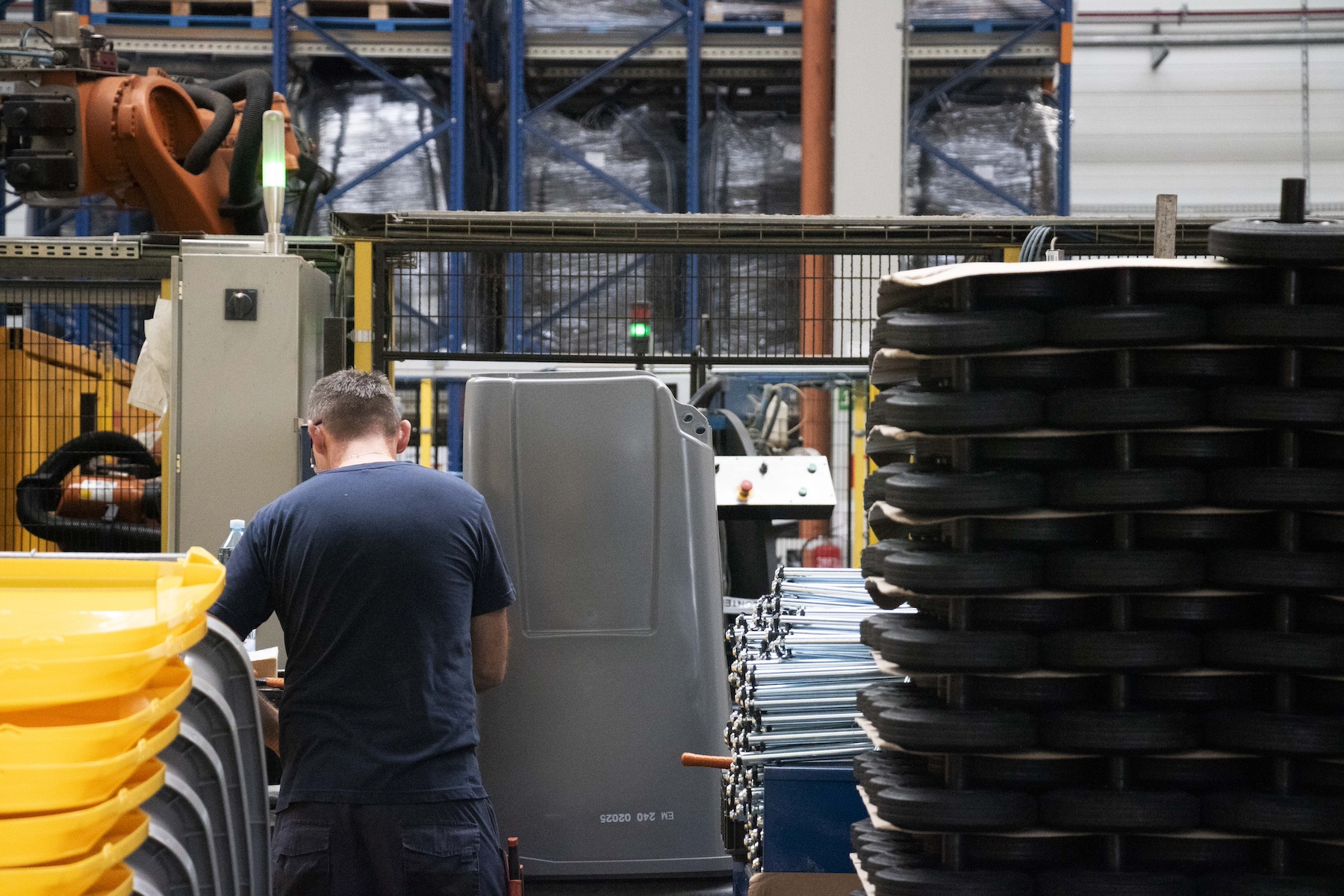Waste and recycling provision needs early consideration by developers, especially in high-density urban areas, says Stantec senior waste consultant Michael Robinson-Moltke, who explains how underground refuse storage (URS) systems could help overcome some planning challenges
How we handle and manage waste within the home impacts everyone’s daily life – but how much planning goes into an operational waste strategy for a new development?
Thankfully, the waste strategy’s importance is being increasingly recognised for its place within a desirable and well-functioning development. Perhaps a more pertinent question would be, at what stage is due consideration given to the operational waste element? The answer is not always soon enough.
It is often raised late in the design process, with a solution cobbled together to ensure minimum disruption to the ‘fixed’ design with, perhaps, a token check of the refuse collection vehicle (RCV) swept-path analysis. As a result, the allocated waste and recycling areas have, historically, been tucked away in dark corners, often with little thought given to convenience, access, safety, lighting and signage. So, not areas that encourage users to take the time to separate recycling streams, or bother to move beyond the first container – or area of floor – on which to leave their waste.
It has also often led to the under-provision of storage, and a lack of space for the segregation of waste streams. It might also leave a development with a long-term challenge that local waste collections teams must try to overcome, probably through bespoke arrangements that their ever dwindling resources would be stretched even further to deliver.
With viability pressures on developers resulting in a higher density of development, particularly in urban areas, there is greater importance on planning properly to accommodate developments’ waste needs.
Most local authorities have some form of focused planning guidance for waste. That said, when were they last updated to reflect the changes in development approaches, and the direction of travel of national waste policy, including the targets being set?
It’s pleasing to see that more importance is being placed on this planning guidance. A good example is the detailed and comprehensive guidance recently issued for consultation by the London Borough of Tower Hamlets.1 I would hope this might become the benchmark template from which other local authorities can draw and escalate the importance of waste planning within developments in their boroughs or urban centres. For any proposed development, I would encourage early engagement with the waste-collection authority, to gain an understanding of what is expected, and what local policy should be considered. Where a template of the waste requirement can be embedded from scheme inception – so as to fit with other competing requirements, such as bike stores or electric charging points – a development will benefit from less redesign in the longer term. It is also likely to be more economical than the often complex and time-consuming retrofitting of waste arrangements.
Underground storage systems
With this recognition that waste and recycling provision for residents and commercial tenants needs due consideration from developers, it is also important to understand that local authorities have the ability to encourage a move away from the historical norms. What could be done differently? How could some of these challenges be overcome? Are there alternative systems that could be given more consideration?
The improvements and solutions will only be realised through a more open-minded approach from stakeholders and, where possible, greater early engagement during the planning process. Is there a mindset against exploring non-conventional presentation and collection systems? Perhaps from some.
In all areas of our lives, we are seeing how innovation and technology is changing the way we do things. There is no reason why the presentation and collection of our domestic and commercial waste streams should be any different.
One area that is ripe for significant improvement concerns the systems in place for highdensity urban living. We are already seeing some innovative schemes being developed in London – for example, the vacuum collection systems in Wembley and Barking. There are also now a significant number of London boroughs collecting from – and exploring the use of – underground refuse storage (URS) systems.
At Stantec, we are involved in sites across the London boroughs of Merton, Havering, and Barking and Dagenham where planning challenges are being addressed with a view to installing URS. Some key planning aspects with these systems are:
- Collection vehicle access
- Pedestrian pathways
- Site topography
- Local capacity and segregation requirements
- Residential carry distances.
These all need careful consideration, but with early engagement across the design team, experience shows us that an optimum layout can be agreed on that achieves the desired aesthetics, as well as the operational functionality for both residents and servicing teams.
In many instances, these URS offer the most viable and practical solution to the waste-storage and collection challenges of high-density urban living. While they need to be allocated external space, a waste strategy using URS has the potential to free up valuable internal space for, potentially, additional – or larger – ground-floor units.
The conflict with landscaping consultants is inevitable, and while the footprint of multiple units might be significant, the benefit of visible disposal systems planned to be on pedestrian exit routes helps nudge users to behave responsibly, as well as deterring abuse of the system.
The technology available with these systems can include fill sensors and access fobs, all of which can be a useful tool for local authorities to effectively focus information and education campaigns to drive up recycling levels.
Financing – and, in particular, capital outlay – is often perceived as a barrier. However, we have worked in the negotiation of innovative S106 agreements (legal ‘tools’ that ensure a proposal is aceptable in planning terms) where such perceived obstacles can be overcome when looking to move away from the ‘norm’. Variation of fleet is one potential barrier, but with ever more systems in place, there is now a broader market for new collection vehicles and the opportunity to potentially spread the risk on standby vehicles. For the local authority, a URS can result in significant reductions in issues associated with odour and vermin. There is anecdotal evidence to suggest a drop in the volume of negative resident feedback where URS are operating instead of conventional bin stores. Our work within Cambridge has shown the introduction of URS has not resulted in any reduction in recycling rates, which had been raised as a concern. As just one small – but important – part of the broader circular economy concept, it is an exciting time to be involved in the planning for waste in developments. More than ever, developers are looking for innovation, and there are real opportunities to learn from others, be open-minded, and embed how waste is managed into the core ethos of the community. Not only with URS, but also with conventional collection systems and other options, the importance of proper planning and early engagement should not be underestimated. This will ultimately lead to a comprehensive waste strategy, which complements and strengthens an application and the community within the development.
Source:
The Chartered Institution of Waste Management (CIWM) / circularonline.co.uk / Circular: / July/August 2021 / page 68.




